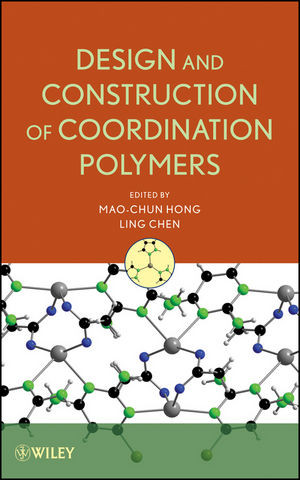

Most ebook files are in PDF format, so you can easily read them using various software such as Foxit Reader or directly on the Google Chrome browser.
Some ebook files are released by publishers in other formats such as .awz, .mobi, .epub, .fb2, etc. You may need to install specific software to read these formats on mobile/PC, such as Calibre.
Please read the tutorial at this link: https://ebookbell.com/faq
We offer FREE conversion to the popular formats you request; however, this may take some time. Therefore, right after payment, please email us, and we will try to provide the service as quickly as possible.
For some exceptional file formats or broken links (if any), please refrain from opening any disputes. Instead, email us first, and we will try to assist within a maximum of 6 hours.
EbookBell Team

4.4
32 reviewsDesign and Construction of Coordination Polymers
Edited by
Mao-Chun Hong
Ling Chen
A Unique Resource on coordination Polymers
Coordination polymers are a growing, interdisciplinary field with numerous potential applications in chemistry and materials. Design and Construction of Coordination Polymers provides a comprehensive introduction to this field, focusing on synthetic strategies, structures, properties, and potential applications. Each chapter provides a unique perspective on coordination polymers, offering a dedicated approach as well as deeper insights on the most important facets of this interdisciplinary area.
Combining the consistent editorial approach of a textbook with the up-to-date data and topics usually found in the latest monographs and handbooks, Design and Construction of Coordination Polymers offers an unparalleled reference to the state of the art. Among other topics, it covers:
Addressing a wide range of readers, Design and Construction of Coordination Polymers will prove an invaluable resource to everyone from senior-level undergraduate and graduate students to working scientists.Content:
Chapter 1 Coordinative Flexibility of Monovalent Silver in [AgIChapter 2 Indium(III)–Organic Coordination Polymers with Versatile Topological Structures Based on Multicarboxylate Ligands (pages 25–61): Lian Chen, Fei?Long Jiang, Zheng?Zhong Lin and Mao?Chun Hong
Chapter 3 Crystal Engineering of Coordination Polymers via Solvothermal In Situ Metal–Ligand Reactions (pages 63–86): Jie?Peng Zhang and Xiao?Ming Chen
Chapter 4 Construction of Some Organic–Inorganic Hybrid Complexes Based on Polyoxometalates (pages 87–110): Can?Zhong Lu, Quan?Guo Zhai, Xiao?Yuan Wu, Li?Juan Chen, Shu?Mei Chen, Zhen?Guo Zhao and Xiao?Yu Jiang
Chapter 5 Silver(I) Coordination Polymers (pages 111–144): Cheng?Yong Su, Chun?Long Chen, Jian?Yong Zhang and Bei?Sheng Kang
Chapter 6 Tuning Structures and Properties of Coordination Polymers by the Noncoordinating Backbone of Bridging Ligands (pages 145–170): Miao Du and Xian?He Bu
Chapter 7 Ferroelectric Metal–Organic Coordination Compounds (pages 171–193): Heng?Yun Ye, Wen Zhang and Ren?Gen Xiong
Chapter 8 Constructing Magnetic Molecular Solids by Employing Three?Atom Ligands as Bridges (pages 195–228): Xin?Yi Wang, Zhe?Ming Wang and Song Gao
Chapter 9 Structures and Properties of Heavy Main?Group Iodometalates (pages 229–266): Li?Ming Wu and Ling Chen
Chapter 10 Cluster?Based Supramolecular Compounds from Mo(W)/Cu/S Cluster Precursors (pages 267–306): Jian?Ping Lang, Wen?Hua Zhang, Hong?Xi Li and Zhi?Gang Ren
Chapter 11 Microporous Metal–Organic Frameworks as Functional Materials for Gas Storage and Separation (pages 307–352): Long Pan, Kun?Hao Li, Jeongyong Lee, David H. Olson and Jing Li
Chapter 12 Design and Construction of Metal–Organic Frameworks for Hydrogen Storage and Selective Gas Adsorption (pages 353–373): Sheng?Qian Ma, Christopher D. Collier and Hong?Cai Zhou
Chapter 13 Structure and Activity of Some Bioinorganic Coordination Complexes (pages 375–403): Jin?Tao Wang, Yu?Jia Wang, Ping Hu and Zong?Wan Mao